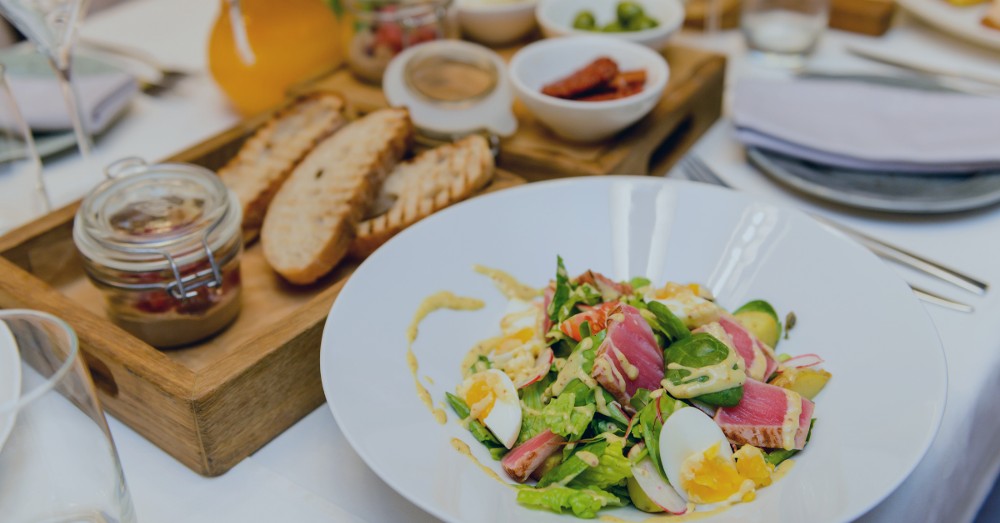Managing food costs is critical to running a successful restaurant. But while there are many ways to manage spending, there’s little you can do if you don’t accurately know what your food costs are. That’s why the first thing you should do, before implementing any cost savings strategies, is determine how much your restaurant is spending on food.
This step may seem obvious, but not all restaurateurs keep proper track of their food costs. And those who do, don’t always do it on a regular enough basis.
While it can be a consuming task, it’s an important part of understanding where you’re spending and how to cut back. And the more frequently you check this number, the more likely you are to uncover cost saving opportunities.
How to track food costs
Tracking food costs can be easily done by restaurant inventory management software and entering your food receipts, along with receipts for other expenses, on a regular basis (once a week is a good place to start).
Once you have the cost of your food (also called cost of goods sold or COGS), you will want to determine your food cost percentage. This is how much money you spend on food in relation to your food sales.
Food cost percentage = COGS / food sales X 100
A healthy food cost percentage will be between 25 percent and 35 percent. It’s okay if you are spending more on food, but this needs to be balanced out by lower costs in other areas like labour or rent - otherwise it will have a huge effect on your bottom line.
Once you know your total food costs spending and food cost percentage, you can start to consider whether some of these strategies will work for you:
- Do inventory counts regularly and consistently
Make sure you do regular inventory counts and review inventory reports frequently. This will provide insight and clear visibility over your inventory position. It will provide information on how quickly food items move within your restaurant (turnover) so you can optimize orders. It also gives you an opportunity to flag items that need to be used before they go off, reducing spoilage.
Using restaurant inventory management software can be a quick way to streamline the inventory process.
- Reduce food waste
Reducing food waste is most likely one of the biggest steps you can take to reduce food costs. According to recent data collected in Canada, 38 percent of produce, 20 percent of meat and 21 percent of dairy, eggs and field crops become food waste.
To help reduce your food consider a food waste audit. This will help determine just how much food you are wasting and uncover why.
- Make bulk purchases
If you have non-perishable food items or products with far away expiry dates, consider buying in bulk to benefit from discounts. Chat with your vendors to find out what kind of bulk order offers they have and then work with them to maximize your savings.
Consistent inventory counts will help you uncover which items you may be able to purchase in bulk. If you’re using inventory management software, you will be able to produce reports that will streamline this process and help reduce the risk of overbuying.
- Shop around for vendors
Reduced costs and discounts can be a major benefit of vendor loyalty, but it can also make us blind to better opportunities. Try and source out other suppliers to find out what they are willing to offer. You can also take quotes to current suppliers and ask for discounts or price matches.
- Do some of the prep work in-house
While buying a chicken already deboned or vegetables already cut can be convenient, this convenience comes at a cost. If your kitchen staff have extra time before services, consider doing some of this work in house to save food costs.
If your staff are already spread thin, you may want to compare the cost of convenience with the cost of hiring another prep cook.
- Implement portion control policies
Monitor how much food your customers are leaving on the plate or taking home with them. If customers aren’t finishing their meals consistently, it probably means you can reduce your portions.
In addition, make sure your staff are all using the same portions. Not only will this reduce overserving, but it will also ensure customers get consistent service every time they visit. Using scales or measuring spoons is a good way to implement portion controls.
- Cost every recipe
Determine exactly how much you are spending to make one portion of each dish. Once you know how much a dish costs, you can either find a way to reduce the per portion costs or consider replacing the dish with something else that will sell well but costs less.
You can also look at the food cost percentage of each dish to ensure you are pricing your items properly.
This can be done manually or through restaurant software, which will reduce errors.
Are you looking to improve your food costing processes? Contact the Sculpture Hospitality team of specialists today. We’d love to help.










